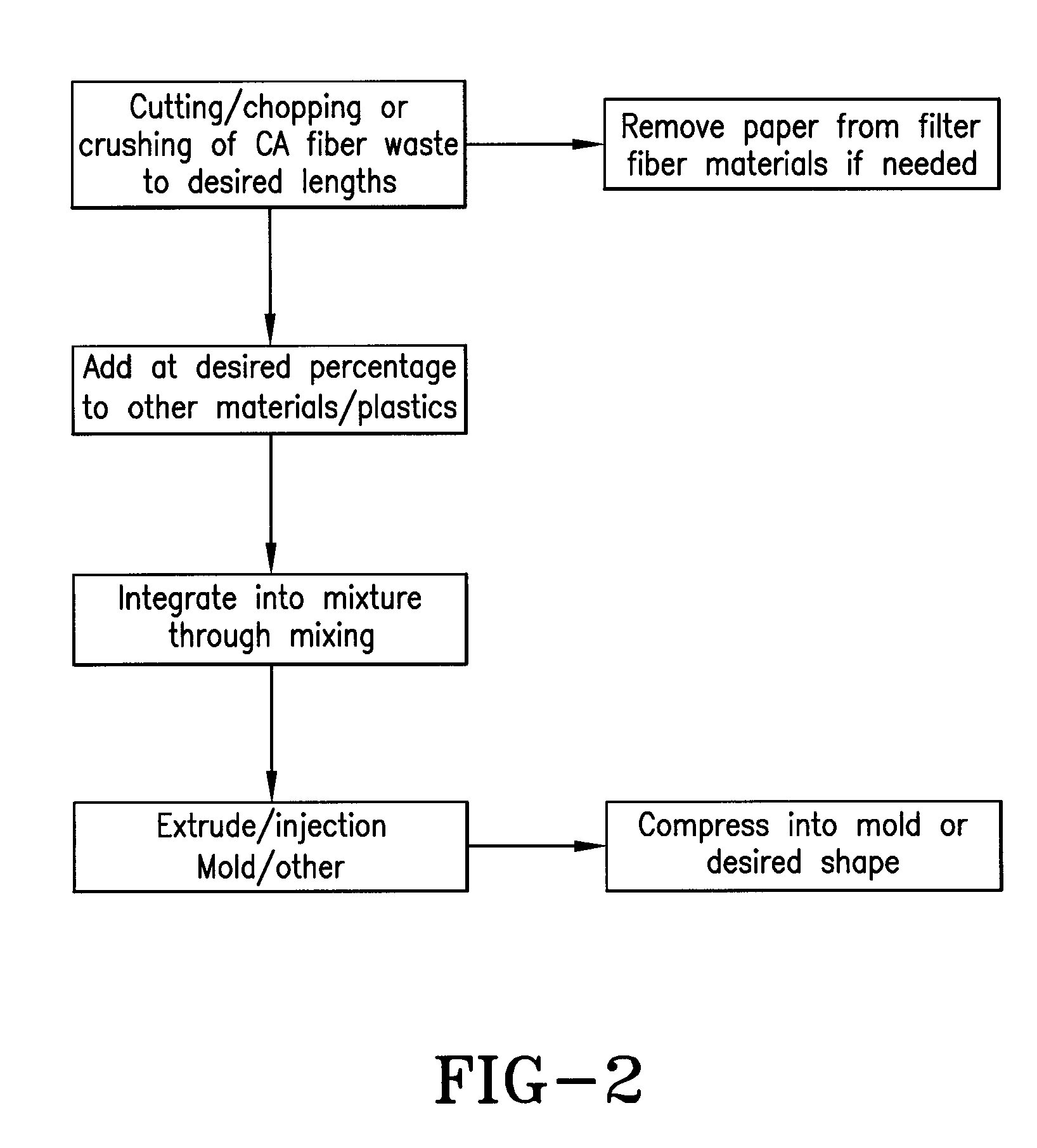Process and Method for Cellulose Acetate Manufacturing Waste Product Recycling
a technology of cellulose acetate and waste products, applied in the field of process and method of cellulose acetate manufacturing waste product recycling, can solve the problems of wasting years, requiring years, and novel use of waste fibers, so as to reduce weight, improve gas mileage, and improve strength
- Summary
- Abstract
- Description
- Claims
- Application Information
AI Technical Summary
Benefits of technology
Problems solved by technology
Method used
Image
Examples
example 1
[0024]Filter press waste materials from cellulose acetate manufacturing are removed from the waste stream and ground up to any size desired. Larger particles will render a more rough appearance while smaller particles will assist in gaining smoothness. The resultant grind is then wet with acetone (or another solvent know to those in the art). Additional cellulose acetate may be introduced to increase integrity. This material can then be colored, added to with anything that may have resultant characteristics desired, such as UV protection, and then placed into a mold. Molding may be improved with compression. Once allowed to cure or dry, it is removed from the mold. Coatings may be applied as applicable.
example 2
[0025]Press pads may be cut into any size or shape and used for decorative purposes including stepping stones, for example, or any other decorative or functional pieces one experienced in the art may consider.
example 3
[0026]Other cellulose acetate waste materials are liquefied with acetone (or any other solvent one who practices in the art may select) and placed through processes referenced in U.S. Pat. No. 7,560,059 the contents of which is incorporated by reference as if fully recited herein.
PUM
| Property | Measurement | Unit |
|---|---|---|
| Length | aaaaa | aaaaa |
Abstract
Description
Claims
Application Information
 Login to View More
Login to View More - R&D
- Intellectual Property
- Life Sciences
- Materials
- Tech Scout
- Unparalleled Data Quality
- Higher Quality Content
- 60% Fewer Hallucinations
Browse by: Latest US Patents, China's latest patents, Technical Efficacy Thesaurus, Application Domain, Technology Topic, Popular Technical Reports.
© 2025 PatSnap. All rights reserved.Legal|Privacy policy|Modern Slavery Act Transparency Statement|Sitemap|About US| Contact US: help@patsnap.com



